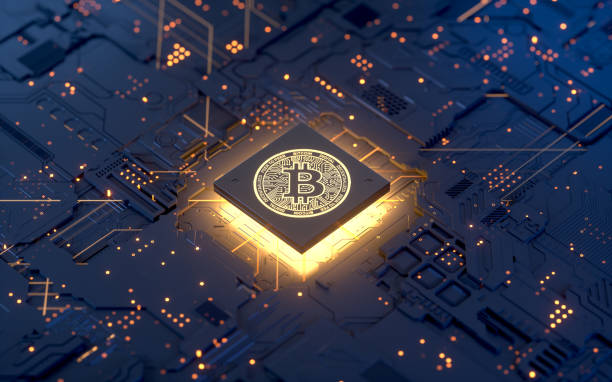In the changing world of digital currencies, Bitcoin is a revolutionary force. It reshapes how we perceive and transact value globally. Often, the question arises: What does a Bitcoin look like? Is it a tangible coin, a digital file, or something entirely different? Join us on a journey to uncover the essence of Bitcoin and understand its form, function, and significance in today’s financial world.
Understanding Bitcoin: Beyond the Physical Realm – What Does a Bitcoin Look Like
Bitcoin, unlike traditional currencies, does not exist in a physical form. It isn’t a coin you can hold in your hand or a note you can fold and pocket. Instead, Bitcoin is a decentralized digital currency, existing purely in the digital realm. At its core, a string of computer code forms a cryptographic token that is stored in a digital wallet and exchanged electronically over a peer-to-peer network.
The Anatomy of a Bitcoin Transaction
At the heart of every Bitcoin transaction lies a complex but elegant process. When someone sends Bitcoin to another party, they’re essentially transferring ownership of a specific amount of Bitcoin from their digital wallet to the recipient’s wallet. At its core, a cryptographic token consists of a string of computer code that you store in a digital wallet and exchange electronically over a peer-to-peer network.
Visualizing Bitcoin: Digital Wallets and Addresses – What Does a Bitcoin Look Like
To visualize Bitcoin, think of it as residing within digital wallets. Additionally, these wallets, accessible through software applications or online platforms, store your Bitcoin holdings and facilitate transactions. Each wallet is associated with a unique alphanumeric address, akin to an email address but for Bitcoin transactions. This address is where you send and receive Bitcoin, ensuring secure and traceable transfers across the blockchain network.
The Blockchain: Bitcoin’s Immutable Ledger
Central to understanding what Bitcoin looks like is grasping the concept of the blockchain. Furthermore, imagine a transparent, tamper-proof ledger that records every Bitcoin transaction ever made. This ledger distributes across thousands of computers worldwide, making it resilient to hacking or manipulation. Each new transaction forms a “block” linked to previous ones, creating a chain of blocks — hence the term blockchain.

Mining and Securing the Bitcoin Network – What Does a Bitcoin Look Like
Bitcoin transactions are validated and added to the blockchain through a process called mining. Additionally, miners use powerful computers to solve complex mathematical puzzles, verify transactions, and ensure the network’s security. So, in return for their efforts, miners are rewarded with newly minted Bitcoins and transaction fees, incentivizing them to maintain the integrity and stability of the Bitcoin network.
Bitcoin’s Value Proposition: Digital Gold and Beyond
Beyond its technical intricacies, Bitcoin holds profound symbolic and practical value. Often likened to digital gold, Bitcoin serves as a store of value and a hedge against inflation. Its finite supply — capped at 21 million coins — and decentralized nature makes it attractive to investors seeking alternative assets and protection against economic uncertainty.
Evolution and Adoption: Bitcoin in the Real World – What Does a Bitcoin Look Like
Since its inception in 2009 by the pseudonymous Satoshi Nakamoto, Bitcoin has sparked a global movement towards decentralized finance and digital currencies. Today, businesses, institutions, and even governments are exploring ways to integrate Bitcoin into their financial ecosystems, driving mainstream adoption and acceptance.
Challenges and Opportunities Ahead
Despite its transformative potential, Bitcoin faces challenges such as regulatory scrutiny, volatility in value, and scalability issues. However, ongoing innovations in blockchain technology and growing institutional interest suggest a promising future for Bitcoin and other cryptocurrencies.

Conclusion: The Future of Digital Currency: What Does a Bitcoin Look Like
What does a Bitcoin look like? It looks like the future of finance — decentralized, secure, and borderless. While it may not have a physical form, its impact resonates globally, offering individuals financial sovereignty and reshaping the way we perceive and interact with money. As we navigate the evolving landscape of digital currencies, Bitcoin stands as a testament to innovation and the limitless possibilities of technology.
As you delve deeper into the world of Bitcoin and digital currencies, remember that its true essence lies not in its physical appearance but in its transformative potential. Bitcoin isn’t just a coin; it’s a symbol of empowerment, innovation, and the future of finance.








